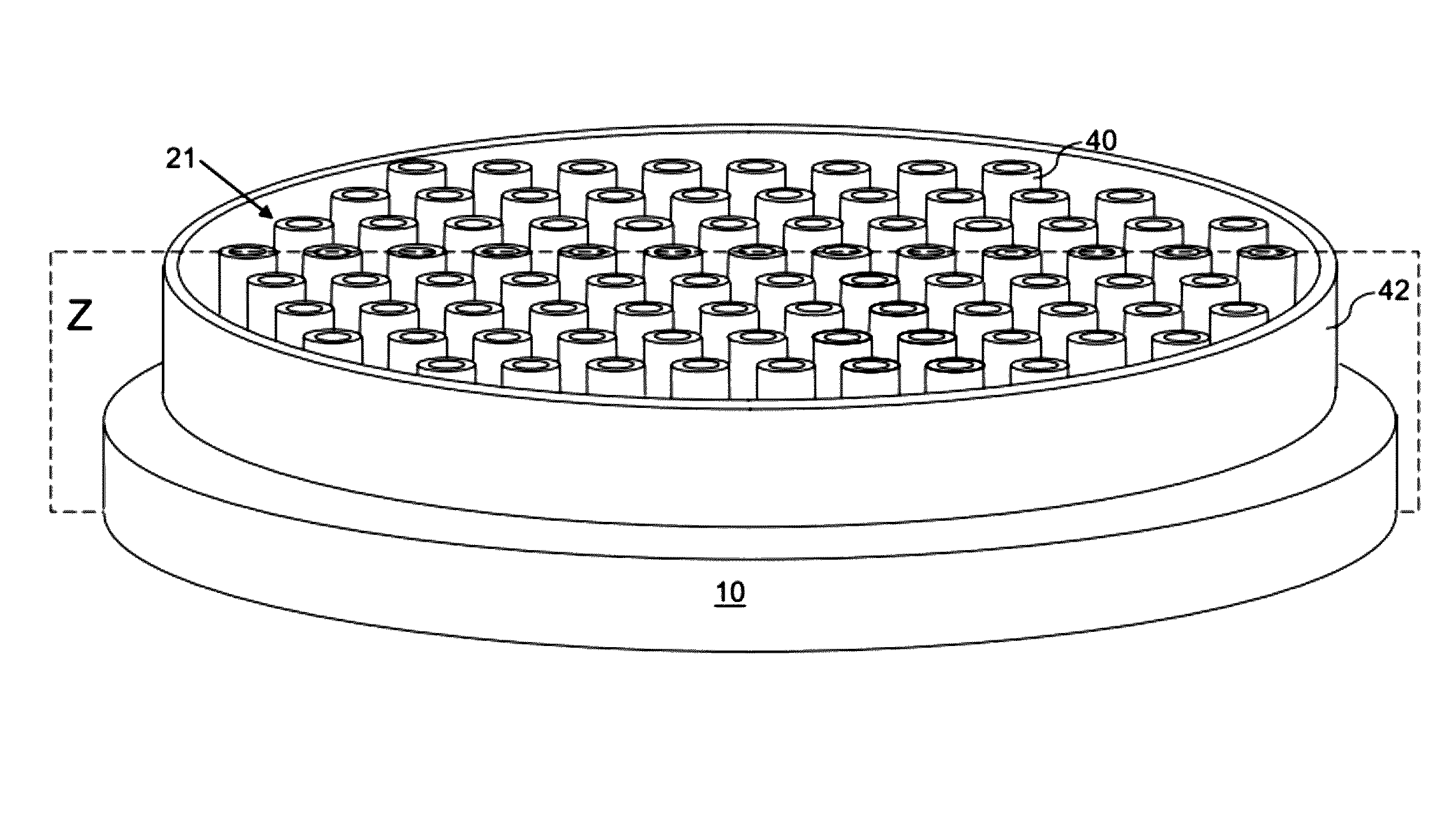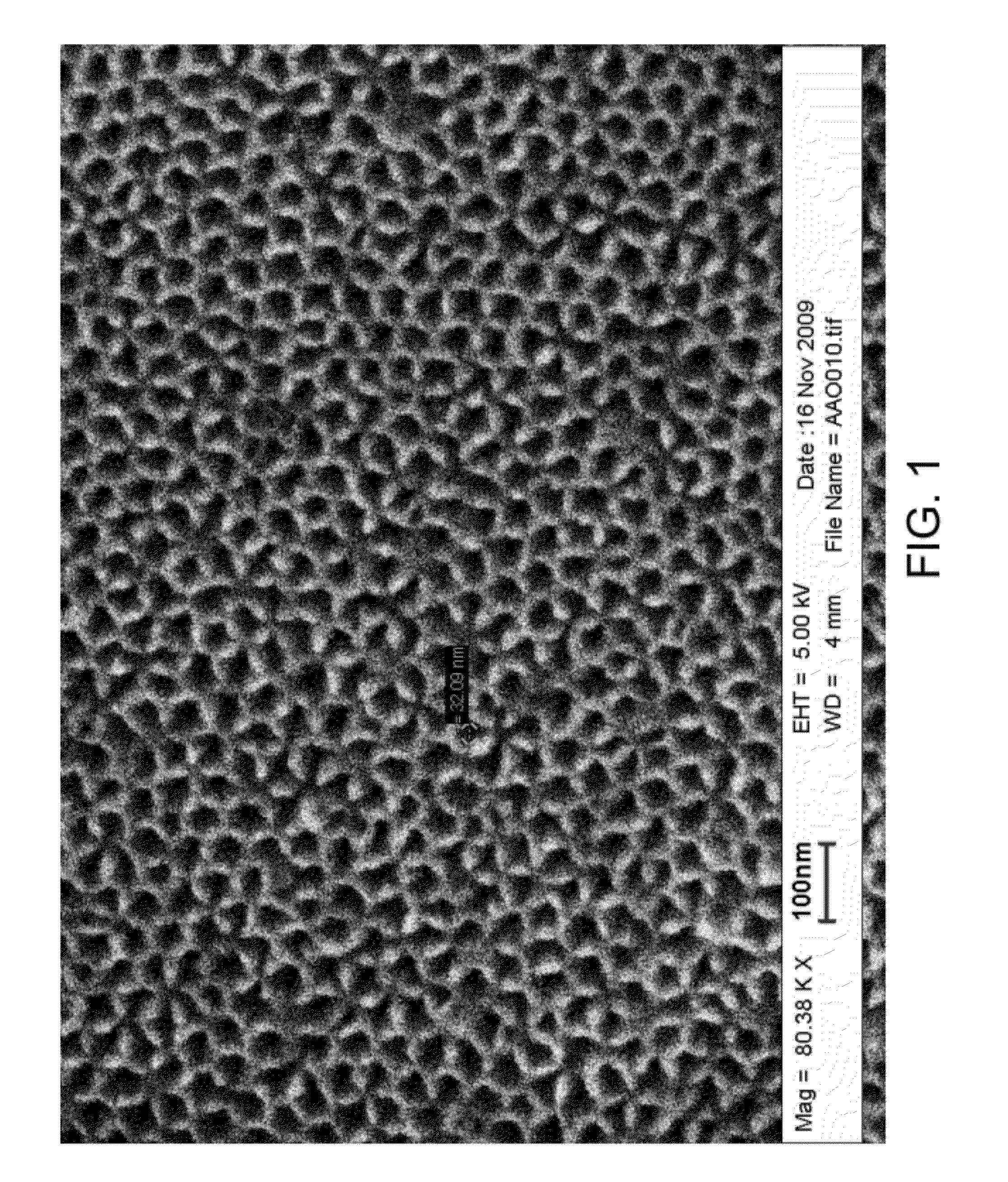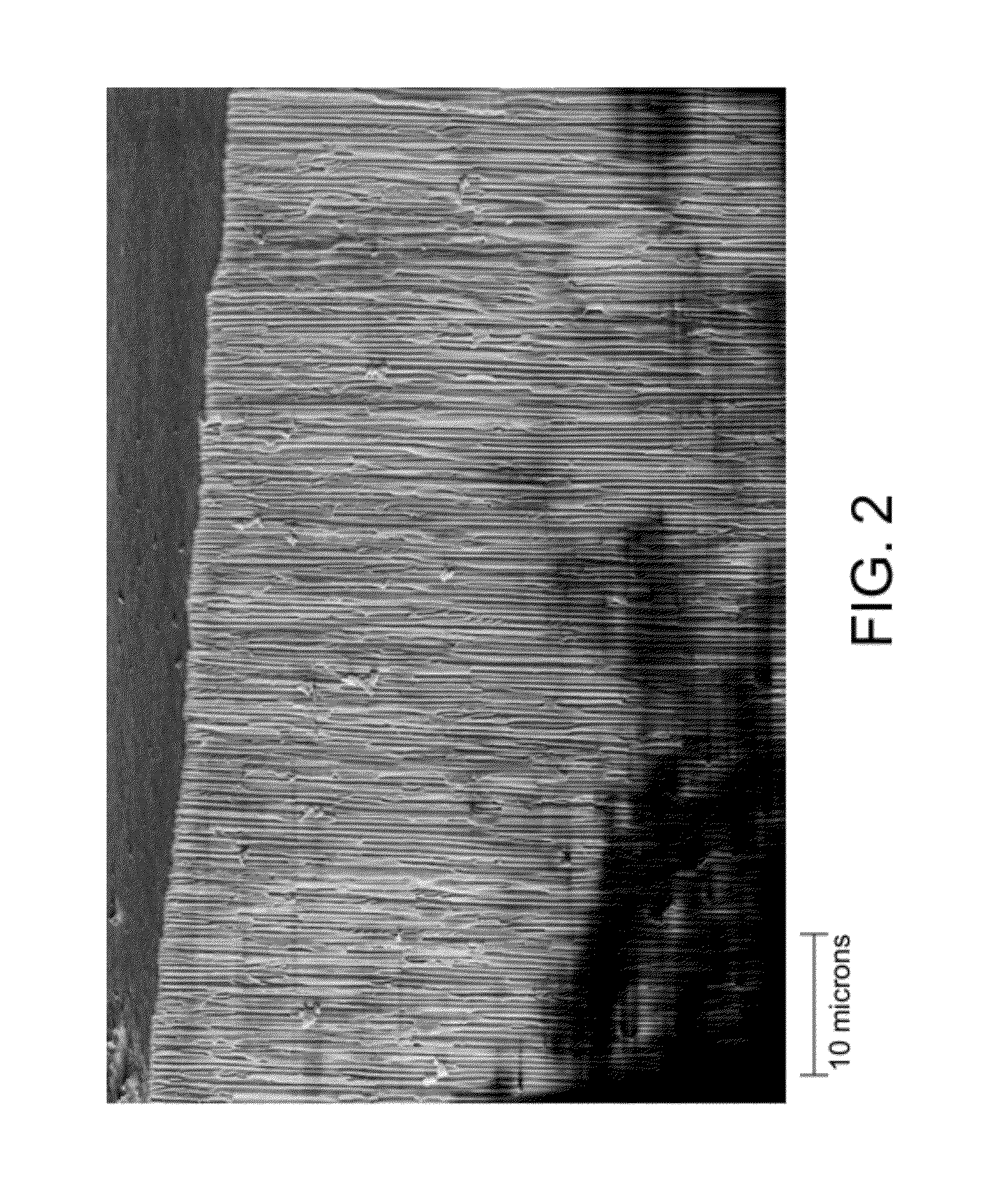Nanostructure electrode for pseudocapacitive energy storage
a pseudocapacitive energy storage and nanostructure technology, applied in the manufacture of final products, electrolytic capacitors, coatings, etc., can solve the problems of limited ultracapacitors to less than 10 wh/kg, no commercial pseudocapacitors, and difficult to increase this area. achieve the effect of maximizing energy per mass and high stored energy density
- Summary
- Abstract
- Description
- Claims
- Application Information
AI Technical Summary
Benefits of technology
Problems solved by technology
Method used
Image
Examples
first embodiment
[0033]Referring FIGS. 3 and 4, a first exemplary structure according to the present disclosure is shown in a bird's eye view in FIG. 3 and in a vertical cross-sectional view in FIG. 4. The Z plane of FIG. 3 is the vertical cross-sectional plane of FIG. 4.
[0034]The first exemplary structure includes a stack of a conductive substrate 10 and an anodized aluminum oxide (AAO) substrate 20. The AAO substrate 20 is a sheet of aluminum foil that is anodically oxidized to be converted into aluminum oxide layer that includes a self-assembled array of vertical pores therein. An AAO substrate 20 can be formed employing methods known in the art. The AAO substrate 20 includes an array of “nanopores”21, which refers to pores having a diameter less than 1 micron. The diameter of individual nanopores 21 and the pitch of the array of nanopores 21 can be controlled by altering anodization parameters.
[0035]Typically, the diameter of each nanopore 21 is from 10 nm to 200 nm, although lesser and greater ...
third embodiment
[0061]Referring to FIG. 17, a third exemplary structure according to the present disclosure can be derived from the second exemplary structure of FIGS. 11 and 12 by removing the topmost planar portion of the pseudocapacitive material layer 30L to expose the surfaces of the AAO substrate 20. Alternately, the third exemplary structure can be derived from the second exemplary structure of FIG. 10 by first removing the topmost planar portion of the pseudocapacitive material layer 30L to expose the surfaces of the AAO substrate 20 and then removing the disposable substrate 99 and the bottom portions of the pseudocapacitive material layer 30L. An assembly (20, 40′) of the AAO substrate 20 and a plurality of pseudocapacitive nanocylinders 40″ is formed. Each pseudocapacitive nanocylinder 40″ is a cylindrical tube that is topologically homeomorphic to a torus, and has an exposed inner vertical sidewall, an exposed top end surface with a hole therein, and an exposed bottom end surface with a...
PUM
| Property | Measurement | Unit |
|---|---|---|
| surface area | aaaaa | aaaaa |
| diameter | aaaaa | aaaaa |
| diameter | aaaaa | aaaaa |
Abstract
Description
Claims
Application Information
 Login to View More
Login to View More - R&D
- Intellectual Property
- Life Sciences
- Materials
- Tech Scout
- Unparalleled Data Quality
- Higher Quality Content
- 60% Fewer Hallucinations
Browse by: Latest US Patents, China's latest patents, Technical Efficacy Thesaurus, Application Domain, Technology Topic, Popular Technical Reports.
© 2025 PatSnap. All rights reserved.Legal|Privacy policy|Modern Slavery Act Transparency Statement|Sitemap|About US| Contact US: help@patsnap.com



